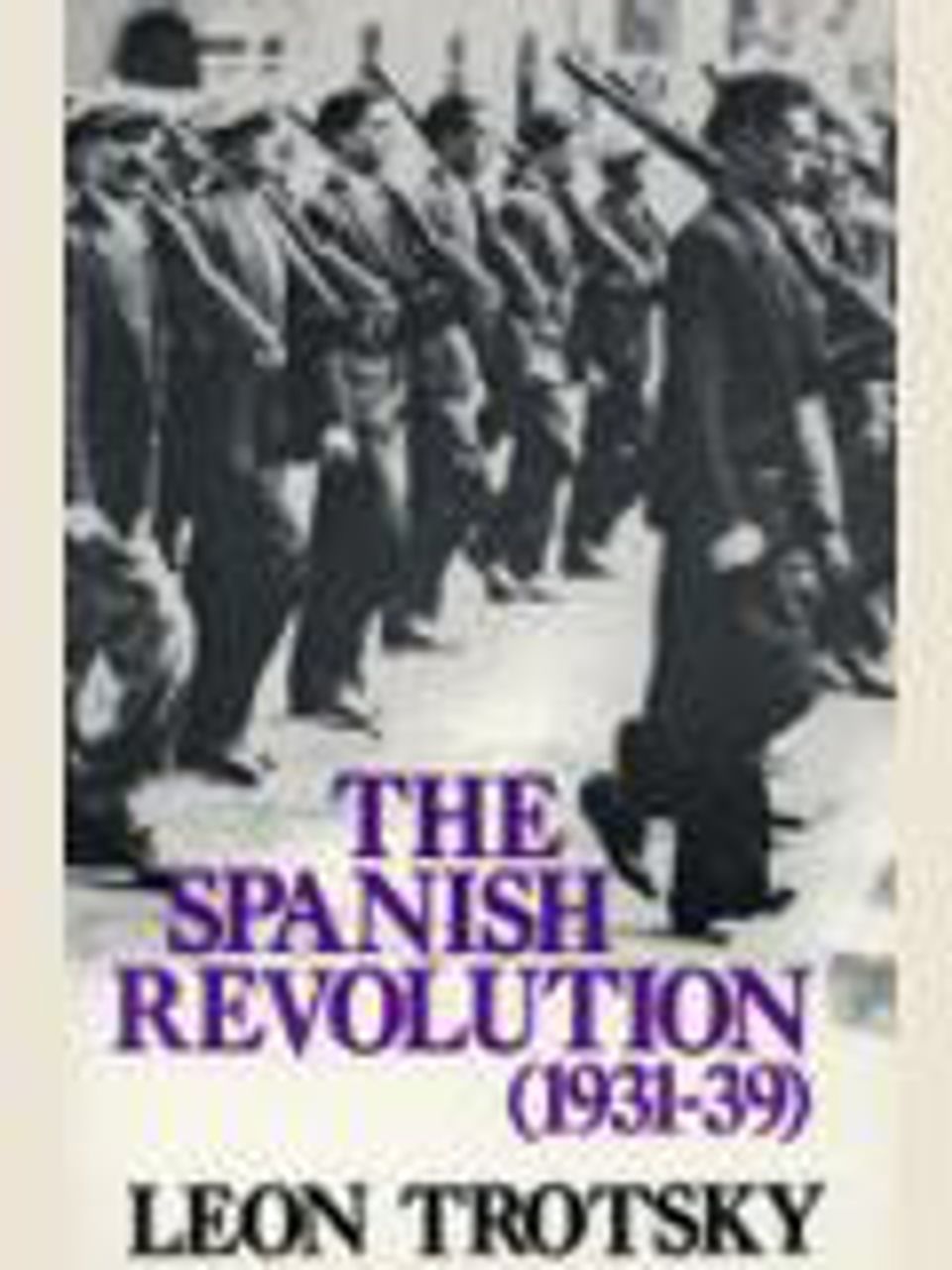Mehring Books is publishing the last installment in its Winter Recommended Reading Series. This week’s recommendation is from Ann Talbot, a regular contributor to the World Socialist Web Site on a variety of historical questions, including intellectual history and the Spanish Revolution. Last week, Patrick Martin suggested The History of the Russian Revolution by Leon Trotsky. Previous recommendations have been made by Nick Beams, Shannon Jones, Tom Eley, David Walsh.
Leon Trotsky, The Spanish Revolution (1931-1939)
It was in April 1931 that the Spanish monarchy was overthrown and a bourgeois republic established, marking the beginning of a slowly emerging revolution that was to encompass the Spanish Civil War and last until 1939. The Civil War began in July 1936, when General Franco attempted to carry out a coup. Workers resisted, although the Popular Front government refused them arms and made no effort to oppose the military coup. In Barcelona, workers commandeered arms and motor vehicles, they called on soldiers to refuse orders. Inspired by their example, workers in Madrid and Valencia did the same. The Asturian miners sent dynamiters to assist. Sailors took over their vessels. The entire machinery of government collapsed at the local and national level leaving the Spanish Republic as a hollow shell. Real power was in the hands of the workers who organised improvised committees to maintain production and continue the war against the fascists.
Describing this revolutionary upsurge of July 1936, Trotsky wrote, “The Spanish proletariat displayed first rate military qualities. In its specific gravity in the country’s economic life, in its political and cultural level, the Spanish proletariat stood on the first day of the revolution not below but above the Russian proletariat at the beginning of 1917.”
What had emerged in Spain was a situation of dual power comparable to that in Russia after the February Revolution. The difference was that there was no revolutionary party and the bourgeois parties, with the help of the Stalinists, were able to regain power and crush the resistance of the workers in May 1937.
Had this revolution succeeded the entire history of the 20th century would have been different. This makes the Spanish Revolution one of the seminal events of the period. Yet even the title of this book would be disputed by many historians who reject the idea that there was a revolution taking place in Spain. For them, the Spanish Civil War was a conflict between democracy and fascism and no more. Trotsky’s writings from this period still have the power to challenge orthodox thought.
This collection is worth a close reading because it provides insight into the way in which Trotsky analysed an evolving situation and how he dealt with the political problems that arose. It charts Trotsky’s efforts to provide a revolutionary perspective for the Spanish working class both before and during the Spanish Civil War. His correspondence with the POUM (Workers’ Party of Marxist Unification) provides his definitive account of centrism. The book reveals a man who, despite his own exile and the murder of those closest to him, remained dedicated to socialist revolution.
I highly recommend it.
The Spanish Revolution (1931-1939) by Leon Trotsky can be purchased online from Mehring Books by clicking here.
Price: $19.95
Publisher: Pathfinder Press
Date: 1973
Length: 447 Pages
ISBN: LC 78 156382

